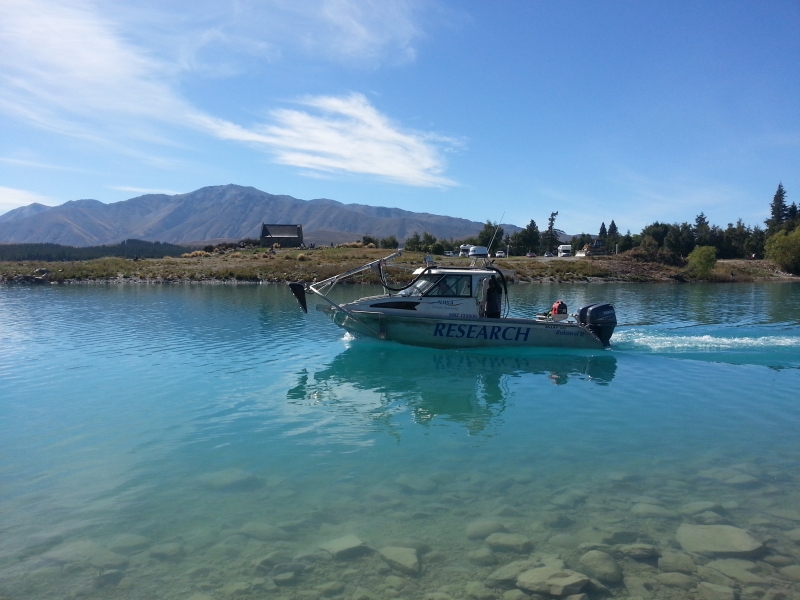NIWA researchers have spent part of the last month keeping a close eye on the bottom of Lake Tekapo to find out what it looks like and what is going on below the lake bed.
The work has revealed large landslides covering more than half of the lake in what is the first scientific project to map the lake floor.
NIWA scientists completed this first ever mapping of a South Island lake using state-of-the-art sonar equipment to collect high quality complete bathymetric maps.
One of NIWA’s research vessels was custom-fitted with the equipment, giving it capability to undertake similar high quality mapping of other New Zealand lakes.
Lake Tekapo - A Tsunami Hazard? from NIWA on Vimeo.
Mapping the lakefloor
The team, led by NIWA marine geologist Dr Joshu Mountjoy, first mapped the lake and then used seismic reflection survey equipment to get images of the sediment beneath the lake floor.
Dr Mountjoy said the data revealed an astounding and unexpectedly dynamic lake bed with a huge range of processes shaping its make up.
“Lake Tekapo was created by large glaciers that bulldozed sediment down the valley 15,000 years ago – as far as where Tekapo is today. Since the glacier retreated the lake has been dammed and is used to generate electricity before the water is carried via canals to Lake Pukaki.
“Meanwhile, large rivers move sediment into the lake and create huge deposits known as deltas. The new data show a complex range of sediment wave or dune fields created by this sediment input.”
Landslides only part of the story
Dr Mountjoy said about half of the 83 square kilometre lake floor is covered in landslide deposits, some spreading more than a kilometre across the lake bed.
“But the landslides on the lake floor are just one part of the story. The seismic surveying will give us images more than 100m under the lake floor that reveal the long history of landslides in the lake.”
Analysis of the data is now under way with the aim of discovering if the landslides can cause tsunamis within the lake and whether they are a hazard to the Lake Tekapo township and hydro power infrastructure. This will be addressed by mathematically simulating landslides generating tsunami and assessing how big they will be at the lake edge.
Funding
The two-year study is funded by the Natural Hazards Research Platform and is a joint NIWA-GNS Science project with input from Otago University and Environment Canterbury.



